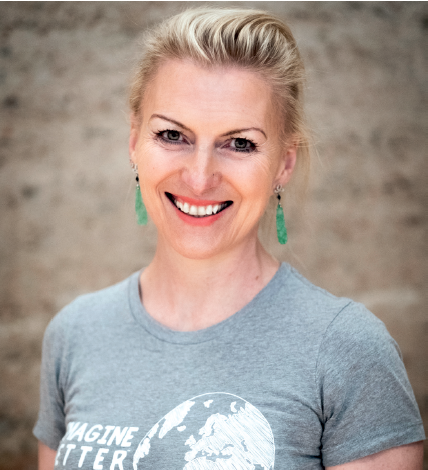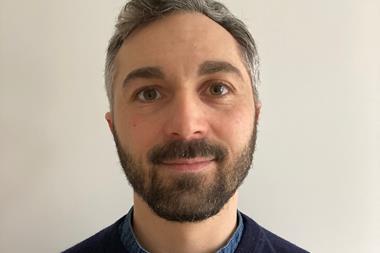Impact investing has undergone a rapid evolution over the past decade. What originally started with investments in countries at the bottom of the pyramid has become a valid investment approach in developed countries as well.

Impact investments were originally meant as a catalyst for change. Today, we observe an increasing number of impact investing vehicles created by mainstream financial service providers, responding to increased client demand for investments with purpose. A once-niche concept is now big: in funds, in conferences, in names, and in marketing.
In his 2018 Letter to CEOs, Larry Fink, BlackRock chief executive, said that companies must also show how they make a positive contribution to society. These words have further fuelled the momentum of impact investing and represented a strong statement from the largest traditional asset manager in the world. To some, Fink’s words represent a necessary development – to others a surprising victory. In any case, they show that pure shareholder value maximisation, as favoured by free market economists, lies in the past. Conscious companies that embrace stakeholders are the new trend.
It is no secret that the world’s biggest companies are likely to be less profitable if they are forced to pay for the resources they consume and for their negative impact on the environment. This is where the UN Sustainable Development Goals (SDGs) come into play. A recent Accenture1 study found that 87% of the CEOs of large companies see the SDGs as providing an opportunity to rethink their approach to sustainable value creation. Indeed, many corporations have taken demonstrable action since the launch of the SDGs in 2015 to support the goals through changes in operations, in particular when it comes to making a less negative impact on the environment.
“Let’s be clear what positive impact means”
What does this mean for impact investors? Investors who intend to deal with underlying causes to problems and not just their symptoms must ask deep questions about investments and their consequences. They must have in mind a substantial systems change and a vision to proactively contribute to positive solutions for the planet.
In the context of the SDGs it is important to realise that impact investing is just one avenue towards contributing to the 2030 target to achieve all 17 SDGs. To reach the SDGs, both value alignment strategies as well as actual value creation strategies are necessary. This includes the full spectrum of different approaches from responsible investments to sustainable investments as well as impact investments.
The term ‘SDG investing’ was coined in late 2016 by the Dutch SDGI Initiative2. It is described as any investment strategy whereby sustainability and/or the SDGs form a material factor in the investment decisions. As such, SDGI investing serves as an umbrella for the full spectrum of sustainable, responsible and impact investments, and recognises the connections between each investment approach.
What large, listed equity funds from traditional asset managers can and should do in that regard is to bring scale. Smaller, illiquid private equity funds, on the other hand, can create real impact. Both help to reach the SDGs; yet both are different: in particular when it comes to the meaning of impact.
Impact investing is interpreted extremely broadly – across all the three buckets of responsible investing, sustainable investing and thematic impact investing. On closer inspection it becomes obvious that the capital deployment spectrum of avoiding harm, benefiting people and planet, and contributing to solutions, is a spring of three different creeks – where value-aligned ESG practices typically reflect the first two buckets and the creation of real impact is definitely more on the ‘contributing to solutions’ side than anywhere else.
Paul Brest, Ronald Gilson and Mark Wolfson brought it to the point in a 2018 paper by telling investors to “treat the presence of any public equities in a self-styled impact fund as the thirteenth strike of the clock, which calls the others into question”3.
What we are observing in the market is a re-branding of sustainability funds into impact funds. Such ‘impact washing’ is dangerous for the accountability and further growth of impact investing. It calls for a set of commonly agreed principles and standards of integrity and a clear confession of what positive impact means.
Clearer guidance will help distinguish a ‘hobbyistic’ approach or what Andrea Armeni, co-founder and executive director of the Transform Finance investor network calls a “PR-stunt” – from a commitment to real impact with a fundamental change in mindset. This change should include a real intention to create deep positive social and or environmental impact, a strong commitment towards impact management and measurement, and an increased level of transparency and due diligence.
To distinguish such ‘impact by accident’ from ‘impact by design’ will help intermediaries to precisely communicate where they stand within the continuum of the three buckets mentioned above. Investors can make more informed decisions and will have more clarity on what to look for and what to expect.
My call as an impact intermediary is straightforward. While delivering on the 2030 agenda, let us communicate clearly whether the investment vehicles we offer intend to avoid harm, benefit people and planet, or contribute to solutions.
If we claim to contribute to solutions and intend to create positive impact with an investment vehicle we must be open to take on increased responsibility and additional deliverables to investors – such as demonstrating publicly how the actual impact practice helps to enable the chosen SDG and the vehicle’s intention to create positive impact – as well as showing in addition that the impact measurement practice is aligned with industry best practices, including the Impact Management Project (IMP).
This will help build an accountable base for the sustainable growth and the further scaling of impact investments.
1 https://www.accenture.com/us-en/insight-un-global-compact-ceo-study
2 https://static1.squarespace.com/
3 Brest, Paul Andrew and Gilson, Ronald J and Wolfson, Mark A, How Investors Can (and Can’t) Create Social Value (9 March 2018). European Corporate Governance Institute (ECGI) – Law Working Paper No. 394/2018.
Christin ter Braak-Forstinger is the co-founder and CEO of Chi Impact Capital, an independent (private equity) impact fund manager based in Zurich. She the author of the book Conscious Investing (Harriman House, 2017)






























No comments yet